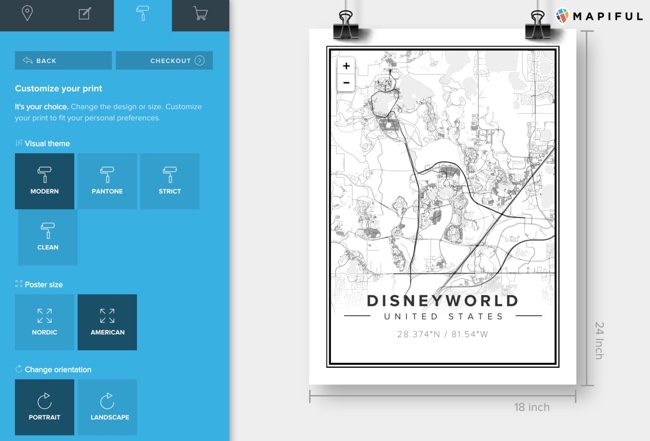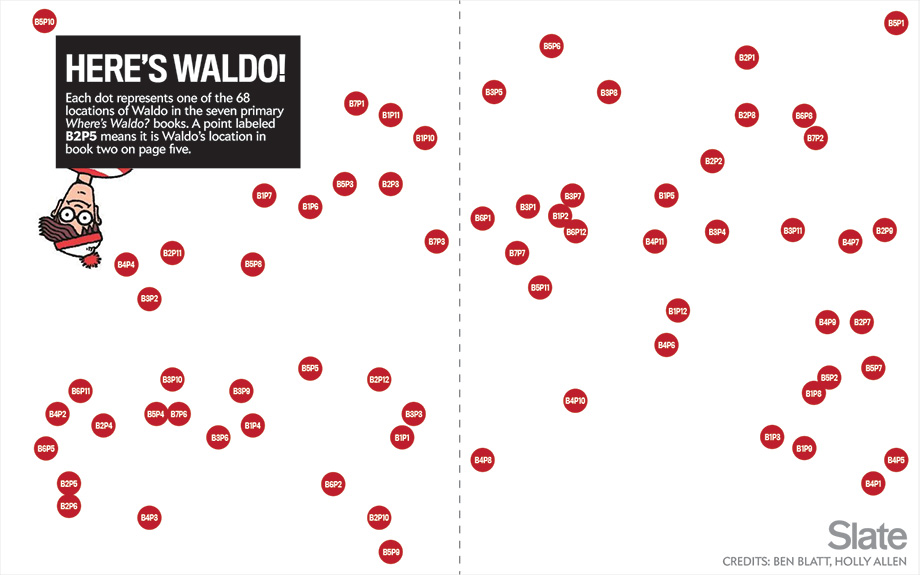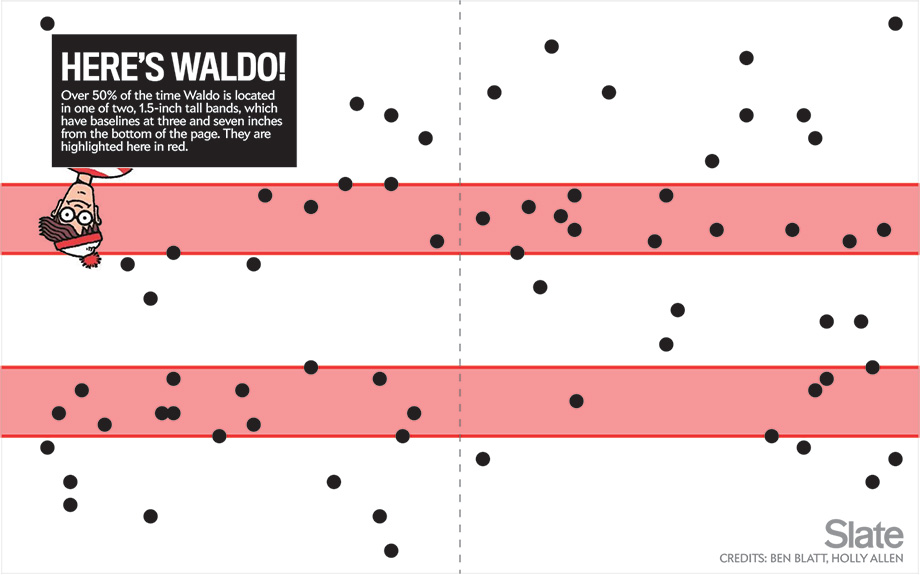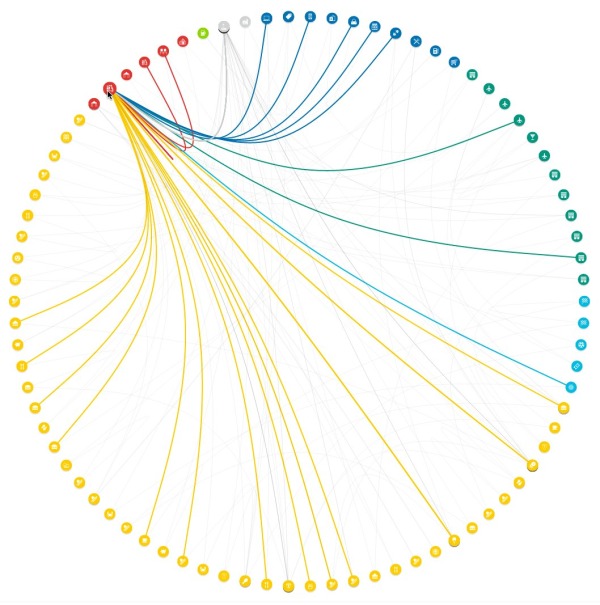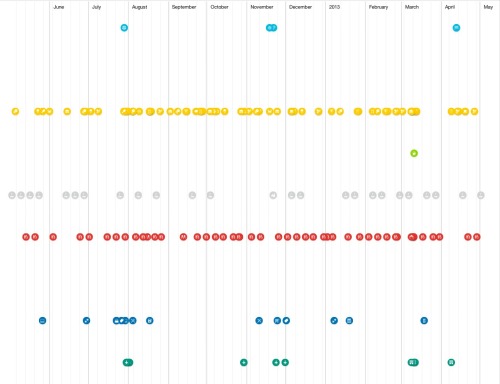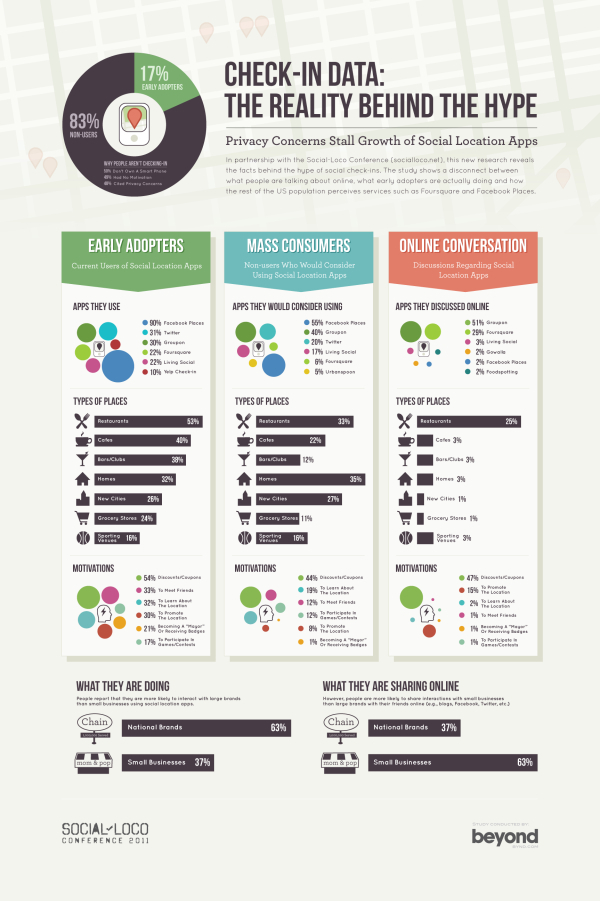
Inofrmation is power. Data visualization has the power to change the world! Change our habits, our laws, our business strategies and what we understand about the world around us. Our understanding of data forms the foundation of how we make choices, form opinions, and at least one study claims that up to 80% of the human brain is wired just to interpret and remember visual data.
Anyone reading this blog has a basic understanding that data visualization makes things easier to understand. It puts data into context and allows the viewer to see large data sets summarized in a much smaller space. I’ve avoided updating to the latest iOS on my iPhone until I could put together this post since it’s such a great example of how visualizing data turns it into information that people can use.
Earlier this year, Alasdair Allan and Pete Warden announced at the Where 2.0 conference that Apple’s iPhones were tracking all of your location data in an open, accessbile file on your computer. ALL of the location data since the phone was first turned on, which could be years of data. Heavily covered by the press, you can see their announcement here. The reason I bring this up on Cool Infographics, is that I believe the visualization itself is what caused this to become a major media event sometimes referred to as “Locationgate.”
Some industry and forensic experts knew about this data already, and many others had tried to to make the public aware of it without any success. Just telling people that your cell phone is storing location data doesn’t make it real and personal enogh to get the press and the public to care. In fact, there have been other stories that Google’s Android and Microsoft’s Windows Phone 7 also gather this tracking data, but only Apple’s data was turned into a visualization and captured attention.
Alasdair and Pete wrote a simple application that anyone could download and use to see their own location data visualized on a map. This not only made the story more understandable but it made it personal because I could see my own data.
We’d been discussing doing a visualization of mobile data, and while he was researching into what was available, Alasdair discovered this file. At first we weren’t sure how much data was there, but after we dug further and visualized the extracted data, it became clear that there was a scary amount of detail on our movements. It also became obvious that at least some other people knew about it, but it wasn’t being publicized.
iPhoneTracker is an open-source project that visualizes the location data that your iOS device is recording.
Created by Alasdair Allan and Pete Warden using the OpenStreetMap and OpenHeatMap frameworks.

As you can see above, they were even nice with data, and aggregated it into a simple grid that isn’t the actual GPS locations or location of the cell towers. (This shows my trip to DisneyWorld in Florida) The size of the circles shows the frequency of data points within that specific location. So the visual shows an approximate location, but the actual data file on the iPhone was much more detailed. Of course, the application was open source, so others started playing with the code and created much more detailed versions of the software. Here’s that same data using the Creepy Edition of iPhoneTracker:

I believe that this use of data visualization to communicate the story was the primary factor that caused a media furor, lawsuits, press releases, interviews, government hearings and proposals to change our laws.
Apple posted an official press release responding to all of the attention and released a software update that deletes most of the historical data. Sadly, the next time I update my iPhone, the historical data will all be erased. Personally, I wish I had the option to continue to gather my own data because I’m into this sort of thing. This file is now also encrypted if you turn on “Encrypt iPhone Backup” so it’s no longer easily accessible.
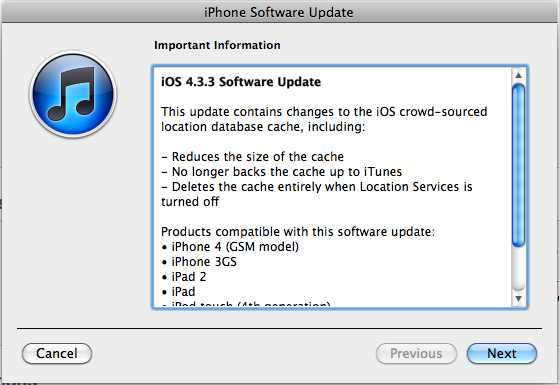
What’s the point? Data visualization can be used to make your information relevant to your audience and get their attention. Don’t just tell people your story, show them.
Update on Thursday, August 25, 2011 at 3:15PM by
 Randy
Randy
Since posting this, I have found the OpenPaths project from the NYTimes.
OpenPaths is an anonymous, user-contributed database for the personal location data files recorded by iOS devices. Users securely store, explore, and manage their personal location data, and grant researchers access to portions of that data as they choose.
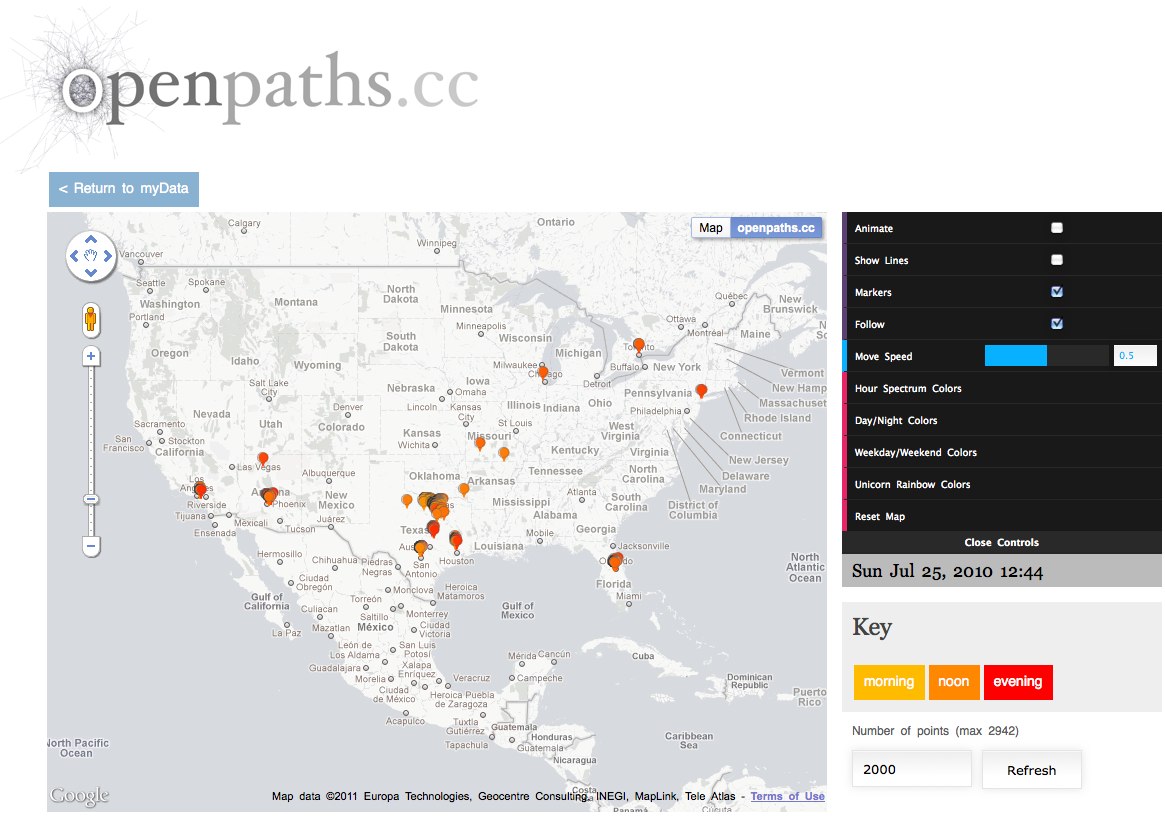
Even though I can’t continue to let my iPhone track my location, I did donate my data and can use the interactive map whenever I want. At least I haven’t lost the data.









 Randy
Randy